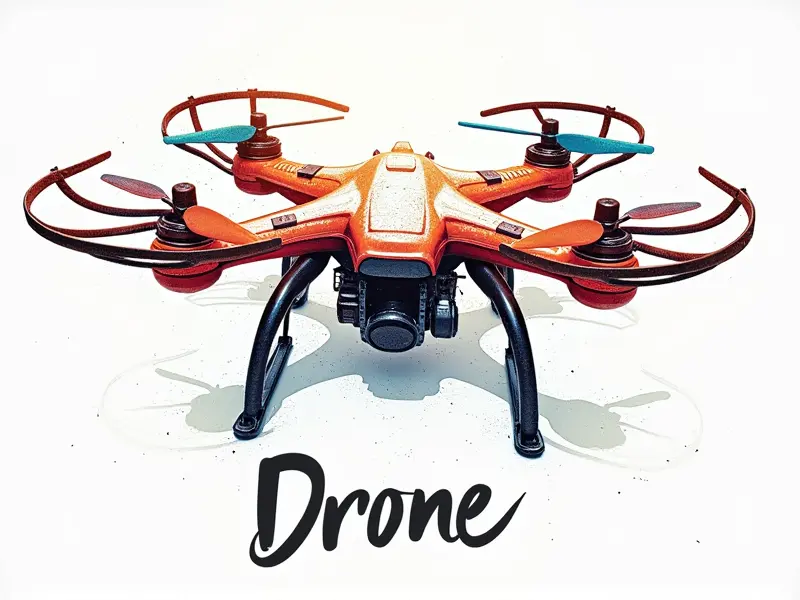How do I tune my drone's PID?

Mastering Drone PID Tuning in Minutes
Welcome to the ultimate guide on tuning your drone's Proportional Integral Derivative (PID) settings. If you're a drone enthusiast or pilot, achieving stable and precise flight is crucial for both recreational flying and competitive racing. This article will walk you through the process of fine-tuning your drone's PID parameters to ensure optimal performance.
Quick Guide to Perfect PID Settings
The PID controller plays a vital role in maintaining stability during flight by adjusting the throttle output based on the error between the desired and actual position, speed, or angle. Here’s how you can achieve perfect PID settings:
- Understand the Basics: Familiarize yourself with each component of the PID controller: Proportional (P), Integral (I), and Derivative (D).
- Start with P-Only: Begin by tuning just the proportional gain to stabilize your drone in hover mode.
- Add I Term Gradually: Introduce integral control to eliminate steady-state errors but be cautious of oscillations.
- Tune D for Stability: Fine-tune the derivative term to dampen overshoot and improve response times.
Easy Steps to Tune Your Drone PID
Fine-tuning your drone's PID settings can seem daunting, but with these easy steps, you'll be able to achieve stable flight in no time:
- Pre-flight Checks: Ensure that your drone is properly assembled and balanced before attempting any tuning.
- Select a Tuning Algorithm: Choose an appropriate PID tuning algorithm such as Ziegler-Nichols or Cohen-Coon.
- Tune in Hover Mode: Start by hovering the drone at a fixed altitude to tune P, I, and D gains separately.
- Test Different Conditions: Test your tuning under various conditions like wind and payload changes to ensure robustness.
Optimize Your Drone Flight with PID
To optimize the flight performance of your drone, you need to understand how each parameter affects stability and responsiveness. Here’s what you should focus on:
- Proportional Gain (P): Controls the immediate response to error.
- Integral Gain (I): Addresses long-term errors by accumulating past errors over time.
- Derivative Gain (D): Predicts future errors based on current trends and helps dampen oscillations.
Fast Track PID Tuning for Drones
If you're short on time but want to get your drone's PID settings right, follow these fast track steps:
- Start with High P Gain: Set a high proportional gain initially and decrease it until stability is achieved.
- Add Small I Term: Introduce a small integral term to eliminate steady-state errors gradually.
- Increase D Gain Slowly: Gradually increase the derivative gain to improve responsiveness without causing oscillations.
PID Secrets for Stable Drone Performance
Achieving stable drone performance involves more than just setting PID values; it requires understanding and fine-tuning each parameter effectively. Here are some insider tips:
- Balance P, I, D Gains: Strive to achieve a balance between all three terms for optimal stability.
- Avoid Over-Tuning: Be cautious not to over-tune your drone as this can lead to instability and oscillations.
- Use Flight Data Logs: Analyze flight data logs to identify areas where PID tuning is needed.
Achieve Precision with Drone PID Tuning
To achieve precision in your drone's performance, focus on the following aspects of PID tuning:
- Set Accurate P Gain: Ensure that your proportional gain is set accurately to provide immediate response.
- Balanced I Term: Fine-tune the integral term to eliminate long-term errors without causing oscillations.
- Tuned D Gain: Optimize the derivative gain for precise and responsive flight control.
PID Tuning Tips for RC Quadcopters
Quadcopter pilots need to pay extra attention to PID tuning due to their unique dynamics. Here are some specific tips:
- Start with Low P Gain: Begin with a low proportional gain and gradually increase it until stability is achieved.
- Add I Term Cautiously: Introduce the integral term slowly to avoid overshoots and oscillations.
- Tune D for Precision: Fine-tune the derivative gain for precise control, especially in fast maneuvers.
Fast Track PID Tuning for FPV Racing
For FPV racing drones, quick and efficient tuning is essential. Here are some steps to help you achieve optimal performance:
- Start with High P Gain: Set a high proportional gain initially to ensure immediate response.
- Add Small I Term: Introduce a small integral term gradually to eliminate steady-state errors.
- Increase D Gain Slowly: Gradually increase the derivative gain for precise and responsive flight control.
Instantly Improve Drone Stability with PID
To instantly improve drone stability, follow these quick tips:
- Balanced P Gain: Ensure your proportional gain is balanced to provide immediate response without causing oscillations.
- Adequate I Term: Introduce an adequate integral term to eliminate steady-state errors.
- Tuned D Gain: Fine-tune the derivative gain for precise and responsive flight control.
The Ultimate PID Tuning Cheat Sheet
To make your PID tuning process as efficient as possible, use this cheat sheet:
| Parameter | Description | Tuning Tips |
|---|---|---|
| P Gain (Proportional) | Controls immediate response to error. | Start high and decrease until stability is achieved. |
| I Gain (Integral) | Eliminates long-term errors by accumulating past errors over time. | Introduce gradually to avoid overshoots. |
| D Gain (Derivative) | Predicts future errors based on current trends and helps dampen oscillations. | Increase slowly for precise control without causing instability. |
By following these tips and utilizing the cheat sheet, you can achieve optimal PID tuning for your drone. Remember to always analyze flight data logs and make adjustments as needed to ensure stable and responsive performance.

